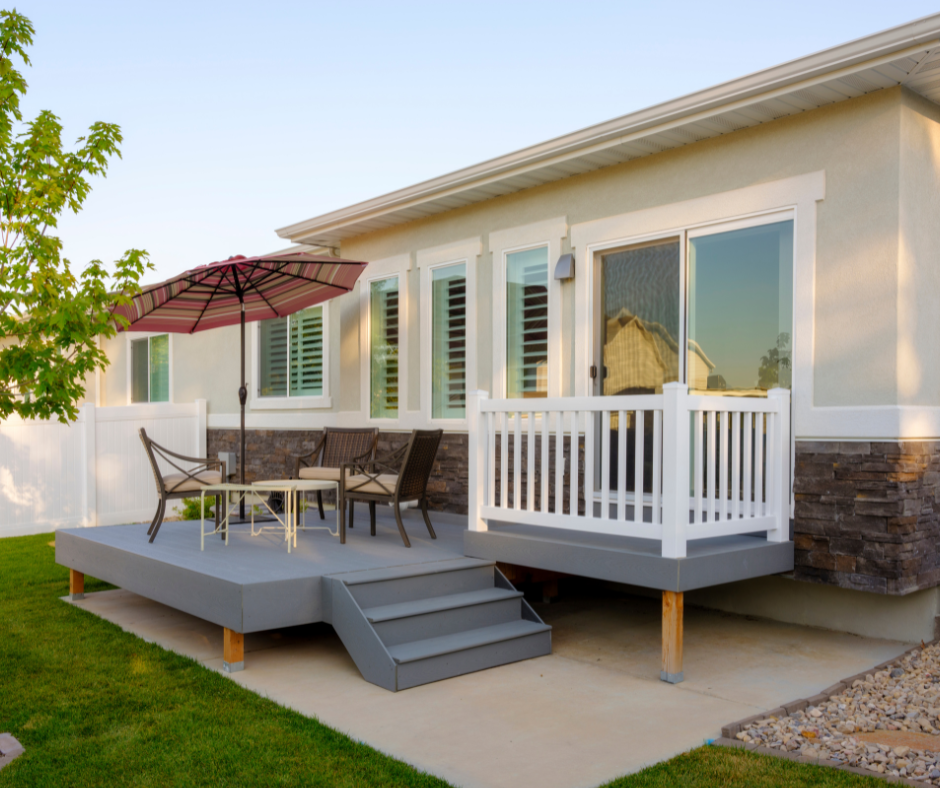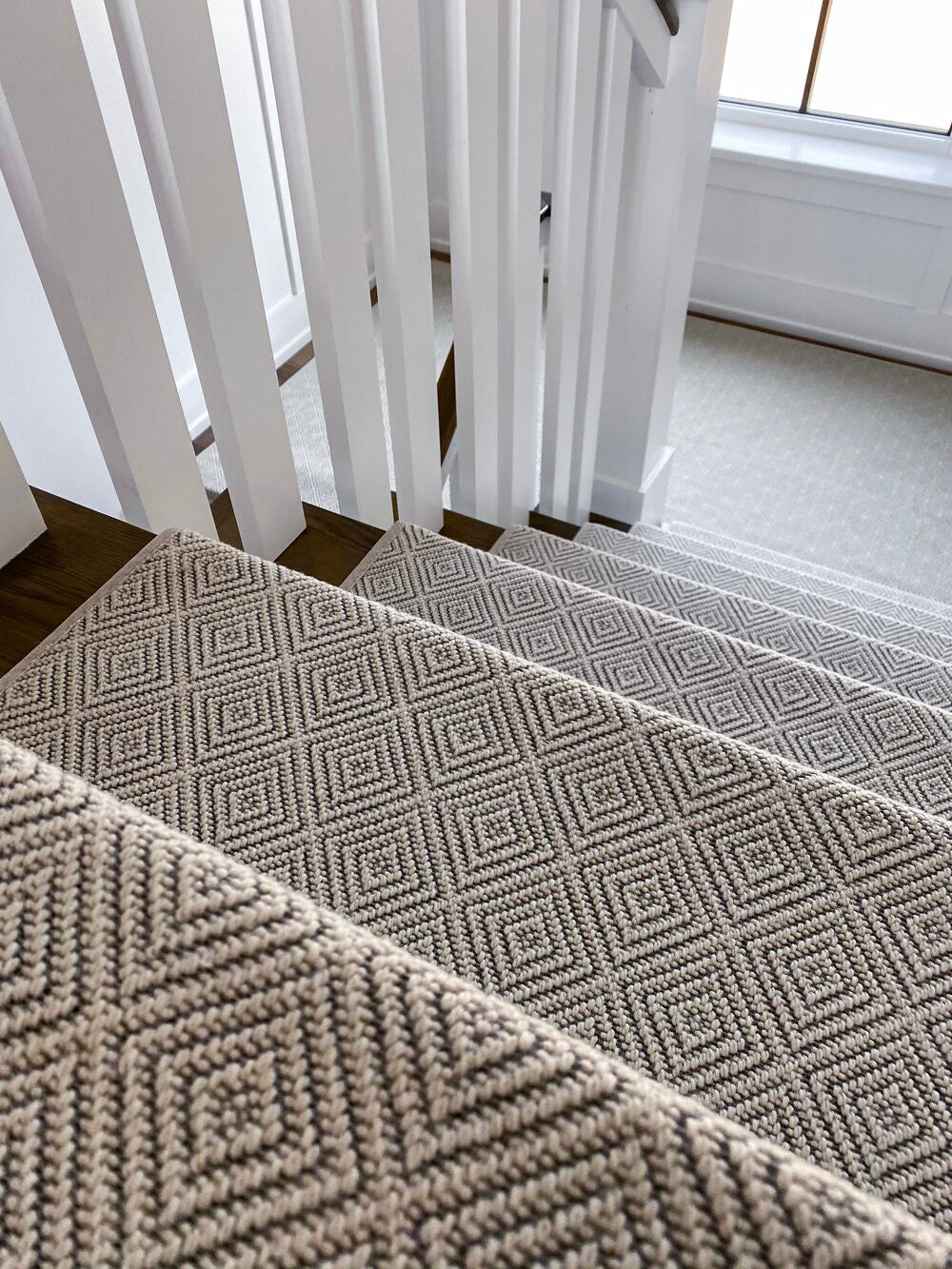Every staircase should feel secure, comfortable, and built with care.
The standard stair railing dimensions are 34 to 38 inches in height from the tread nosing to the top of the handrail.
Getting these measurements right ensures safety, supports proper grip, and meets most building code requirements.
In this guide, you’ll learn how to measure stair railing dimensions correctly, avoid common mistakes, and choose materials that last.
We’ll also explain how features like carpet stair treads can enhance both safety and style.
Whether you're building new stairs or upgrading existing ones, every detail matters—and we’ll show you why.
What Are the Dimensions of a Handrail for Stairs?
Handrails should be between 34 and 38 inches high from the edge of the step to the top of the rail.
This height range is comfortable for most people and helps maintain balance on the stairs.
It also aligns with most U.S. building codes, ensuring both compliance and peace of mind.
When choosing or installing a new railing system, double-check the building codes in your area, especially for commercial or multifamily properties, which may have stricter standards.
How Wide Should a Stair Handrail Be?
A stair handrail should be easy and comfortable to hold.
The usual width is between 1.25 and 2 inches.
This size provides a secure grip while going up or down the stairs and fits most hand sizes comfortably.
Avoid handrails that are too large or too small, as they can become difficult or awkward to hold, especially for children or older adults.
Smooth finishes are important here, too—make sure there are no sharp edges or splinters.
What Is Proper Railing Spacing?
The spacing between the vertical posts, or balusters, should be no more than 4 inches apart.
This measurement isn’t just about looks—it’s about safety.
Tight spacing helps prevent small children or pets from squeezing through or getting stuck.
In many local codes, the “4-inch rule” is legally required for all new residential stair installations.
Besides the vertical spacing, make sure the horizontal railings (if any) are also secure and difficult to climb for curious kids.
Do I Need a Stair Rail on My Deck?
Whether you need a stair rail on your deck depends on how high the deck is off the ground.
If your deck is more than 30 inches above grade, most building codes require you to install a railing system on the stairs and the deck perimeter.
This rule protects people from dangerous falls, especially on slippery or wet surfaces.
Even if your deck is lower, adding a railing is a smart move—it gives a finished look and an added sense of security for everyone who uses it.
Do Deck Stair Tread Dimensions Affect Railing?
Yes, the dimensions of your deck stair treads directly influence where and how your railing system should be installed.
When determining stair railing dimensions, you must consider the deck stair tread dimensions first.
Each stair tread’s depth and width play a role in how the handrail is angled and positioned.
For instance, if your stair treads are unusually deep or shallow, you may need to adjust the height or spacing of the railing brackets to maintain the correct 34–38 inch height from the nosing.
Incorrect tread dimensions can throw off your entire railing alignment.
Always measure your stair treads before choosing railing brackets, and adjust your angle accordingly.
This small step ensures both safety and visual alignment.
Tips for Measuring and Installing Stair Railings
Accuracy matters when it comes to railing installation.
Use these tips to get the job done right the first time.
Measure the Height Correctly
Start by measuring from the front edge of each tread to the top of the handrail.
Do this consistently all along the staircase.
Any dip or rise in the handrail can throw off both safety and appearance.
Mark your bracket positions with a pencil before drilling to double-check consistency.
Choose the Right Materials
Pick a handrail material that matches your home’s style and holds up over time.
Wood, metal, and composite are common options, each with its own benefits.
Wood brings warmth and is great for interiors.
Metal works well in industrial or modern spaces, and composite is perfect for outdoor railings thanks to its weather resistance.
Make sure the material is smooth, splinter-free, and comfortable to grip.
Secure the Handrail Properly
Use heavy-duty brackets or screws to attach the handrail firmly to the wall or posts.
Weak or loose fasteners can cause the rail to wobble or fail under pressure.
Space your brackets evenly—at least one every 4 feet—and double-check that each one is tightly secured.
When installing outdoor handrails, use rust-resistant or stainless-steel hardware for longer life.
Additional Considerations for Stair Railings
Not all stairs are the same.
These extra factors can impact safety, durability, and comfort.
Indoor vs. Outdoor Railings
Indoor stair railings usually focus on aesthetics and comfort.
You might choose a soft wooden railing with rounded edges that blends into your interior décor.
Outdoor railings, by contrast, must withstand rain, snow, heat, and UV rays.
Materials like powder-coated aluminum, vinyl, and treated wood are common for decks and exterior stairs.
Still, no matter where the railing is installed, function must come before fashion.
Even the best-looking rail isn’t worth much if it wobbles or splinters.
Regular Maintenance
Like any part of your home, stair railings require upkeep.
Inspect your handrails every few months.
Look for signs of damage: loose screws, wobbly posts, rust, rot, or warping.
If your handrail is wooden, consider applying a fresh coat of stain or sealant once a year to protect it from moisture.
For metal railings, look for flaking paint or corrosion, especially on older models or those installed outdoors.
Safety First
Safety should always come first when dealing with staircases and railings.
The handrail must be smooth, secure, and easy to grip.
If there are any jagged edges, splinters, or loose pieces, fix them immediately.
For homes with young children or older adults, consider adding extra safety features like baby gates at the top or bottom of the stairs, or even secondary handrails for added grip.
A non-slip stair tread is also a smart addition to help prevent slips, especially on hardwood or tile stairs.
These upgrades can make a big difference in day-to-day safety.
Common Mistakes to Avoid When Measuring Stair Railing Dimensions
Small errors in measuring can lead to big safety issues.
Avoid these common mistakes to keep your stair railings secure and up to code.
Using Floor Instead of Tread Nosing as a Reference
One of the most common mistakes is measuring stair railing height from the floor below the stairs instead of the actual stair tread.
Always measure from the nosing—the front edge of the tread—because that’s where foot traffic actually happens.
Ignoring Building Codes
Many homeowners forget to check local building codes before installing railings.
Each area may have its own specific requirements for handrail height, baluster spacing, or post strength.
Fines aside, not following code could lead to dangerous outcomes in the event of a fall or injury.
Overlooking the Impact of Deck Stair Tread Dimensions
If your stair tread depth is non-standard—whether too shallow or too deep—it can impact both the comfort and legality of your handrail setup.
This is especially true when dealing with outdoor stairs.
Always align the height of your railing system to the exact measurement of your deck stair tread dimensions to avoid awkward angles or incorrect placements.
How to Pair Stair Railings with Carpet Stair Treads
A stair railing isn’t complete without considering what’s underfoot.
Adding carpet stair treads improves traction and provides a softer, quieter surface for foot traffic.
But it’s important that your railing height still meets code after you install your treads.
Even a half-inch of added height can affect compliance.
Install the stair treads first, then measure your railing dimensions from the new surface level.
For best results, choose carpet treads with a peel-and-stick backing for a clean, nail-free install.
Oak Valley Designs offers custom-fit stair treads that enhance both safety and visual appeal, with options that match your railing materials and colors.
Stepping It Up
Getting the stair railing dimensions right makes your stairs safer and easier to use.
From the height and width of the handrail to the spacing of the balusters, every measurement matters.
By following these guidelines, you can create a stairway that is both practical and secure.
Whether you’re installing new railings or updating old ones, focusing on the right dimensions will give your family peace of mind.
And remember, even subtle details—like your deck stair tread dimensions—can affect how well your stair railing system performs.
Plan thoroughly, measure carefully, and always keep safety front and center.
Contact Us Today!
Ready to add safety and style to your stairs?
At Oak Valley Designs, we specialize in luxury stair treads that complement any railing setup.
Whether you're enhancing your staircase or updating old railings, we've got you covered.
-
Website: https://oakvalleydesigns.com/
-
Phone: 706.331.0315
-
Email: info@oakvalleydesigns.com
-
Address: 30 River Ct SW Bldg E Cartersville, Ga 30120




